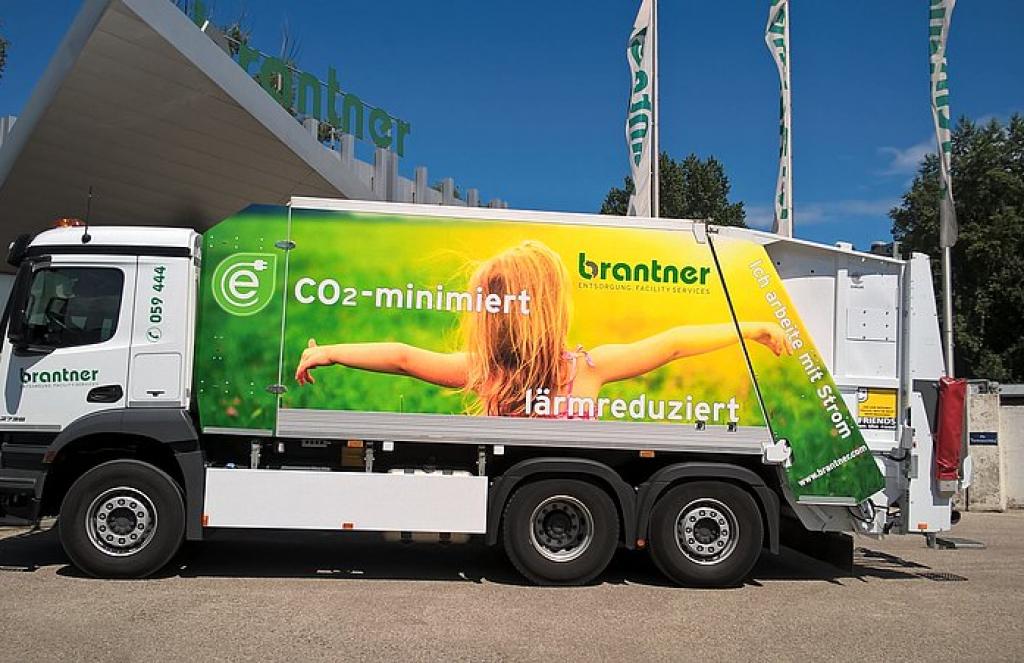Thessaloniki gets ready for its metro launch in November
The underground rapid transit lines have been under construction for almost two decades due to various project delays
 TheMayor.EU logo
TheMayor.EU logo 
The waste disposal company Brantner has a daily commitment to sustainability, Source: Brantner website
The prototype garbage truck premiered in Krems an der Donau and it cost four times as much as a normal one
Austria's first garbage truck that runs on hydrogen was presented on Wednesday. This prototype will be used by Brantner, a waste disposal company based in the city of Krems an der Donau. The pilot route will pass through the popular local tourist destination - Göttweig Abbey, a Benedictine monastery founded as far back as 1072.
The vehicle drives emission-free and almost noise-free, however, it faces the insurmountable obstacle of there being no hydrogen fueling stations in the area. The company has recognised this paradox and is taking steps towards securing the necessary infrastructure.
They claim that the first vehicle should be fully operational in two years, with their aim to convert their whole fleet to hydrogen in the next ten. Until then, they will adapt the prototype to operate in the current conditions.
The green and sustainable industries in the European Union are growing at a rapid pace, fuelled by numerous government efforts and more and more companies are investing in sustainable projects. This is very true for the hydrogen-fuelled waste disposal industry, as other companies across the EU are making the transition.
The Krems an der Donau waste disposal company Brantner is still a great example of a climate responsible business, as their company policy states that the conservation of nature and resources is a day-to-day priority.
This is why they have invested in the hydrogen-powered garbage truck, with the hopes that a fleet of similar models will replace their existing vehicles. The truck itself should save around 80 tonnes of CO2 annually and has numerous advantages, such as reduced noise pollution.
Hydrogen-fuelled vehicles provide several advantages as they do not produce any carbon emissions and result in very little noise pollution. According to Stummer Kommunalfahrzeunge, the company that manufactured the prototype, the garbage truck should be up to 20 decibels quieter.
In terms of range, every indicator shows the truck will be able to keep up with its fossil-fuelled counterparts and refuelling will take the same amount of time – around five minutes.
The hydrogen-powered vehicle has soaked up an investment of several million euros up to this point, around four times as much as a conventional garbage truck. This is, unfortunately, due to the fact there are very few companies capable of producing them in Europe at the moment.
The company Brantner started looking into alternatives for their fossil-fuelled fleet and they paid specific attention to hydrogen. However, there are only five hydrogen fuelling stations in the whole of Austria and none of them are near Krems an der Donau. This is why they decided to provide the necessary infrastructure themselves, but have not yet provided specific details on the matter. What the company has said though is that it will set up a fuelling station and the hydrogen will be produced by a photovoltaic system.
If you want to keep up with how European cities and regions are changing, follow us on Facebook, Twitter and Instagram.

The underground rapid transit lines have been under construction for almost two decades due to various project delays

Now you can get your wine in Talence by paying directly in Bitcoin

That’s because the state has to spend money on updating the railway infrastructure rather than subsidizing the cost of the popular pass

Rethinking renewable energy sources for the urban landscape

The examples, compiled by Beyond Fossil Fuels, can inform and inspire communities and entrepreneurs that still feel trepidation at the prospect of energy transition

Now you can get your wine in Talence by paying directly in Bitcoin

The 10th European Conference on Sustainable Cities and Towns (ESCT) sets the stage for stronger cooperation between the EU, national and local level to fast track Europe's transition to climate neutrality.

At least, that’s the promise made by the mayor of Paris, Anne Hidalgo

The underground rapid transit lines have been under construction for almost two decades due to various project delays

At least, that’s the promise made by the mayor of Paris, Anne Hidalgo

Hostal de Pinós is located in the geographical centre of the autonomous region

Despite its church-y name, the district has long been known as the hangout spot for the artsy crowds

Urban dwellers across the EU are having a say in making their surroundings friendlier to people and the environment.

Forests in the EU can help green the European construction industry and bolster a continent-wide push for architectural improvements.

Apply by 10 November and do your part for the transformation of European public spaces

An interview with the Mayor of a Polish city that seeks to reinvent itself

An interview with the newly elected ICLEI President and Mayor of Malmö

A conversation with the Mayor of Lisbon about the spirit and dimensions of innovation present in the Portuguese capital














